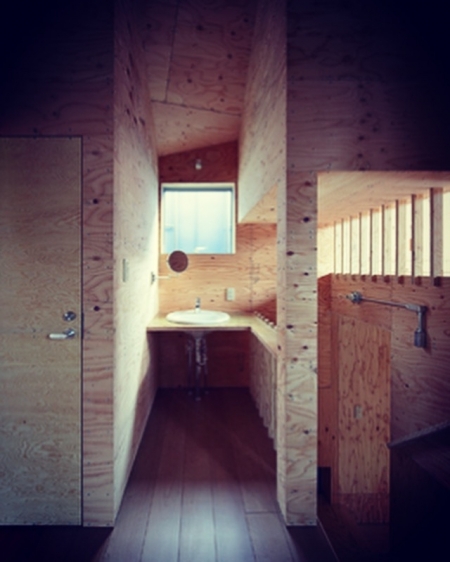まず見てしまう
常に全身で体感するし、してしまう、建築は人のスケールよりも大きく、建築は空間を内包する、そもそも、その空間をつくるために建築行為は存在するから、体感が前提になる。
しかし、人は体感することよりも、視覚が先行する。視覚も五感の一部だから、視覚も体感の一部と考えるかもしれないが、モダニズム建築以降、視覚だけが分離した。
20世紀初頭、写真の発達により、その写真に建築をどのように載せるか、写真に載せることができる建築の部分は一部だけ、全てを載せることはできない、その建築の一部が写真として広まる。
体感すること無しに、その建築の一部の写真を見て、その建築の全てを把握できるようにしなければならない、それも写真はその場にとどまることはない、建築はその場所から動くことはできないが、写真となった建築は自由に動き回ることができるから、時間的余裕がない、だから、瞬時に全てを把握できるようにしなくてはならない。
視覚優位に建築が展開されていく、瞬時の視覚を経て、体感へと移行する建築が優位になる。
もちろん、モダニズム建築は変遷していくのだが、そもそも現代の建築や都市はモダニズム建築を下敷きにしているので、視覚が優位になりやすい。それが人の感覚器官にまで影響を与えていると言っても過言ではないだろう、人は日々、建築や都市に内包されているのだから、影響を受けないはずがない、インスタ映えを欲しがるのもうなずける。
体感が前提で建築行為は存在する、しかし、体感の前に視覚がくる、この認知のズレというか、感じる前に見てしまうことが起こるということが、建築デザインをする上で肝になることで、どう見せるか、どう見えるか、建築雑誌をパラパラと見ていて、そもそもここでも見るから入るのだが、止まるのは既視感がない建築になる、すでに見慣れ光景には興味がわかない、「既視感がない」ということにその建築の全てが凝縮されている。
"I see first"
You always experience the whole body and you feel, building is bigger than human scale, and building includes space. Because building act exists to create the space from the beginning, the sense of living is a premise.
However, the vision precedes the human being to feel. Since vision is also part of the five senses, vision may be considered part of bodily sensation, but since modernism architecture, only vision has separated.
At the beginning of the twentieth century, with the development of photography, how to put architecture in the photograph, only a part of the architecture that can be put in the photograph, but not all, part of the architecture spreads as a photograph .
You must be able to look at some of the photos of the architecture and make it possible to grasp all of the architecture without experiencing it, and the photos will not stay there, the architecture will move from that location Although it can not be done, since the architecture which became a photograph can move freely, it can not afford time, so it must be able to grasp all in an instant.
As architecture is developed in a visual superiority, through instantaneous vision, an architecture that shifts to a bodily sensation becomes superior.
Of course, modernist architecture is changing, but since modern architecture and cities are based on modernist architecture, vision tends to be dominant. It is no exaggeration to say that it affects even human sense organs, because people are included daily in architecture and in the city, they can not be influenced, wanting insta light I can't make it worse.
Building act is premised on bodily sensation, but there is a gap in this cognition when vision comes before bodily sensation, or that it happens to be seen before feeling it, and it becomes a key point in doing architectural design So, I wonder how to see it and how to see it, because I look at architectural magazines as flip-flops, and I'm going to see it from the first place, but the stop will be an architecture with no sense of sight, I'm not interested in sights already familiar, All the buildings are condensed in the sense that there is no sense of sight.

